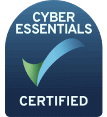A well-established and positive social media community is a sure sign that a business is committed to building relationships with its customers.
Having an online community allows you to interact with your customers on a regular basis, create discussions, ask for feedback, and encourage networking.
This can be great for boosting your brand’s reputation and credibility, as well as providing your customers with a sense of belonging and loyalty.
However, with social media having a user base of 4.95 billion worldwide, it is important to remember that you may encounter negative reactions and content within your community.
It can be difficult to know what to do when you suddenly encounter the negative side of social media.
But do not worry; we are here to help! Continue reading to learn how you can maintain positivity in your social media community while dealing with the negatives…
How can I maintain a positive online community?
Flourishing communities do not just happen, they are the result of continuous work – plenty of time and effort goes into it.
In order to maintain a positive community, you need to introduce the process of community management to your social media strategy.
The term ‘online community management’ refers to how brands will create an inclusive community where they will foster and build relationships with customers to encourage brand loyalty, engagement, and growth.
HubSpot states that “when a brand invests in community management, they transition from an everyday brand to a human brand.”
Essentially, incorporating community management into your social media strategy provides you with the opportunity to show your customers that you are a brand that cares and is willing to go the extra mile.
Use the following steps to help you maintain a positive social media community:
1. Set clear rules and guidelines
The first step towards building the positive social media community you want is to let people know what is expected of them from the start.
Clear guidelines are essential for online communities, as they can help keep conversations positive, reduce the lack of relevant information, and reduce the chances of conflict.
Below is an example of Facebook’s group rules:
Many social media platforms will already have similar guidelines to the above in place for what they expect of their members.
Instagram’s guidelines follow a very similar format, as they focus on fostering a positive and inclusive environment for their users.
The platform has guidelines which are focused on user interactions, such as ‘we remove content that contains credible threats or hate speech’ and the glorification of self-injury.
If user’s fail to comply with these guidelines, Instagram states that they will remove the content and disabled accounts if it is reported.
In addition to user interactions, Instagram has guidelines which users must follow when uploading content to their posts and stories.
These include ‘only sharing photos and videos that you have taken or have the right to share’ and ‘be thoughtful when posting newsworthy events.’
While it may seem obvious, if you do not have the intellectual rights to the content you are planning to post, you should not post it, similarly you should check before posting newsworthy events as they may contain graphic content.
X’s guidelines echo those of Facebook and Instagram in terms of violent speech, abuse harassment, hateful conduct, child exploitation, and sensitive media.
Furthermore, X has a strict policy on authenticity, outlining that users cannot create multiple accounts that interact with the same or similar accounts, misuse the mention feature, or amplify your own accounts engagement.
However, Facebook states that great community guidelines are more than just what is not allowed but also what is encouraged, so members have a clearer idea of how they can engage positively within the community.
Below we have listed some basic rules you can use when writing your own guidelines:
- When communicating with others, you must be kind and respectful
- Hate speech, harassment, bullying, and personal attacks, will not be tolerated and users will be removed from the group
- Do not provide any personal details such as passwords and bank details
- Authentic and expressive discussions are encouraged, but must be kept within the community
- Do not post or engage with spam content
- Always offer support or assistance to those in need
You can also highlight what types of content your community accepts, as well as fun discussion, theme, and weekly activity ideas that could take place within your online community.
2. Monitor your social media community regularly
While having guidelines provides members with a clear outline of what is and is not acceptable, it is still important to regularly monitor your online community.
When carrying out community management, you should always be reading through the comments, discussions, and direct messages taking place.
This is so you can quickly identify and address any negative or inappropriate content that goes against your community guidelines.
If you are only checking your social media comments once or twice a week, you may miss members who require support or have urgent questions, which could influence them to purchase from your business.
Utilising social listening can also provide you with a detailed insight into what users think of your brand, how effective your current marketing efforts are, as well as your audiences needs and pain points.
You can expand on this by introducing the process of sentiment analysis to your content management strategy.
Sentiment analysis involves collecting and analysing of mentions and comments and digging deeper into the emotions and opinions behind the words to gauge the real opinions of your audience.
HubSpot states that 79% of customers expect a response to their social media posts within 24 hours, while 39% expect a response within the first 60 minutes of submitting their comments.
So, it is important that you have a dedicated team member or employ a social media agency to ensure that replies are sent, and comments are not getting missed.
Regularly monitoring your online community’s content is not only essential for making your consumers feel like they are a valued member of the group, but also for protecting your brand’s reputation.
3. Encourage engagement and discussion
If you have recently started your social media community, it will be up to you to initially drive discussions and encourage members to engage with one another.
However, it is always important to post regularly and encourage discussions, so group members don’t feel like you have abandoned the group.
To ensure you have regular discussions with your members, you can add a discussion schedule to your content calendar, outlining discussion topics and any resources you would like to add, such as a quiz or a poll.
LinkedIn advises that you can also encourage members to engage by sharing behind-the-scenes stories, personal anecdotes, and asking questions, as this will allow you to show off your brand’s tone and voice while encouraging comments.
Challenges and competitions, otherwise known as loop giveaways, can also be a great way of getting members to engage and interact, as well as promoting your brand.
For example, if you are a fashion brand, you could hold a competition where your community members could win a £100 voucher and outline what they have to do to be in with a chance of winning.
This could include sharing the competition on their Instagram story, tagging their friends in the comments of the competition post, or sharing their favourite products or pieces from your brand.
4. Keep your cool with negative comments
It is important to remember that as with any online space, you may encounter negative comments in your online community.
While it can be alarming and discouraging to see negative comments in your positive community, you can see these as opportunities to boost your brand’s reputation by dealing with negative comments efficiently and effectively.
Always maintain a positive and friendly approach when dealing with negative comments, and acknowledge the feedback, whether you agree with it or not.
By following this approach, your community members will see that you are committed to customer care and treat any problems as a priority.
Treat negative reviews and comments as valuable information from your customers and use it to make improvements to your brand and the products and services you offer.
5. Take proactive measures to protect the community
To keep your social media community a happy and positive place, you need to regularly remind group members of the community guidelines in the comment threads.
It is not realistic to think that group members won’t ever disagree with each other, but that doesn’t mean it has to turn into a heated argument.
Reiterating the rules can be helpful if users may not have seen the guidelines initially, as well as reinforcing that everyone is held to the same standards of behaviour in your group.
If you do find that your comment sections have gone awry and there are community members violating the guidelines, then you are well within your rights to remove them from the group as per the consequences outlined in your rules.
Be proactive and put processes in place where you can approve or deny posts before they are published for your community to see.
If you are not able to do this, you can introduce user reporting to your online community, which allows group members to report any inappropriate content or behaviour and outline which guideline it violates.
6. Host regular live streams and events
Hosting live streams and events can be a powerful way of promoting engagement within your online community in real time and getting your brand’s name out there.
Your live sessions can take on any form you like, whether that’s tutorials on how to use your products or services or a behind-the-scenes tour of your brand where you can involve other members of your team.
Live streams are also beneficial for announcing new product and service launches, and generating excitement among your community members, while also getting to hear their thoughts and feelings about your latest developments.
One of the most popular emerging methods that brands are using to encourage social media engagement within their online communities is the ‘ask me anything’ session.
Forbes states that having a prominent leadership figure from your brand, such as the CEO or department heads, host an ask-me-anything session can help boost transparency and allow employees and customers to make more personal connections with the brand’s leadership.
7. Provide your online community with exclusives
Promote positivity further in your online community by providing members with rewards and exclusives.
This can show the members of your community that they are valued while also generating leads for your brand.
Rewards and exclusives can include limited-time discounts, bundle offers, private sales events, exclusive content, free shipping, or member-only merchandise.
ProProfs advises that 62% of consumers don’t believe that the brands they are most loyal to are doing enough to reward them.
This highlights the importance of really listening to your customers and what they want and need from your brand in order to remain loyal.
8. Regularly ask your social media community for feedback
Show your online community members that you value their opinions and input by regularly asking them for feedback.
You can do this by asking your audience open-ended questions to encourage thoughtful answers and suggestions, through polls, surveys, and feedback forms.
Ensure you are clear and specific when asking for feedback from your members, by letting them know what type of feedback you want and why it is important.
This will allow you to gather real and transparent information from the people who invest in your brand, so you can make improvements and act on the feedback accordingly.
Do not be afraid to ask for feedback. While it may not always be as positive as you had hoped, 77% of consumers view brands more favourably if they seek out and apply this information to improve experiences.
By regularly asking for feedback, you are building trust and credibility with your community members, as well as promoting a sense of collaboration – they are helping your brand to do even better.
Need help with your organic social media?
Struggling to get your organic social media off the ground? Or maybe you do not know where to start with building up your online community? Whatever difficulties you may be having, get in touch to see how we can help.
Alternatively, book in for a Free Acquisitions Workshop, where you can gain invaluable advice and insights from our expert marketers, receive free resources you can implement right away, and a tailored action plan to take your organic social media to the next level.












